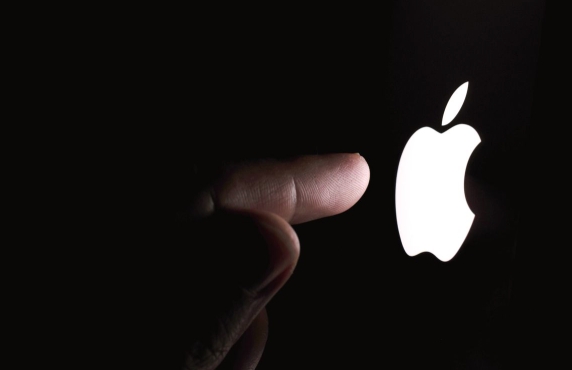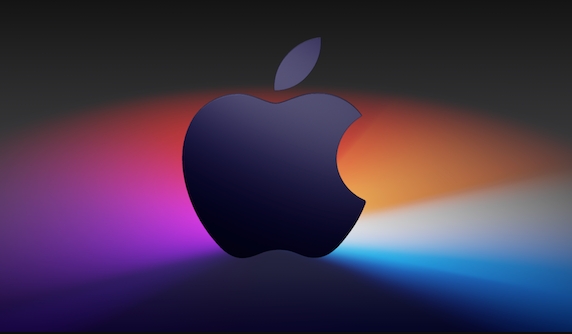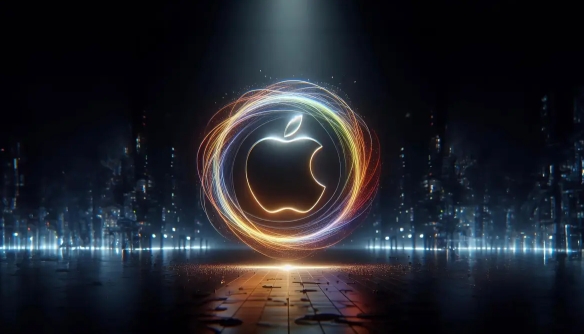macOS update not showing up in Software Update
The reasons and solutions for macOS update not displayed mainly include: 1. Network problems may cause the update to not be displayed. You can check the network connection, switch Wi-Fi or use a wired network, turn off the proxy, and replace DNS; 2. Clear the software update cache, and restart the computer through the terminal after executing the command sudo softwareupdate --clear-catalog; 3. Whether the device is within the Apple support range, old devices may not be able to obtain the latest updates; 4. The Apple server status is abnormal, you can view the system status page or social platform confirmation. When encountering such problems, you should check the above reasons in turn, start with the network and cache, and then check the device compatibility and server status.

You may have checked Software Update several times, but you just can't see the new macOS update push. This situation is actually not uncommon, and there are many reasons. Let’s talk about the key points below: The macOS update is not displayed, which is usually related to network connection, system cache, device compatibility or Apple server status .

Network problems may cause updates to not display
macOS updates require network connection to download information from Apple servers. If the network is unstable or is restricted by certain proxy or firewalls, the update may not occur.

- Check whether you can access Apple-related websites normally (such as apple.com)
- Try switching Wi-Fi or using a wired network
- If you use a proxy, please close it and see if there are any changes
- Sometimes DNS settings may also affect you. You can try changing to 8.8.8 (Google DNS)
Try clearing the software update cache
The system occasionally fails to display the update content correctly due to local cache errors. At this time, manually clear the cache and then recheck it may be effective.
- Open Terminal
- Enter the following command (press Enter):
sudo softwareupdate --clear-catalog
- Then restart the computer, open Software Update again to check it out
This method is effective for many users, especially those cases where "it is obvious that it is time to update but nothing is displayed."

Is the device still within the support range?
Apple won't provide the latest system updates for too old Macs. If your device model is not in the support list, Software Update will naturally not display the new version.
For example:
- macOS Sonoma supports MacBook Air in 2019 and beyond
- Earlier models may only be upgraded to Ventura or earlier versions
You can view the list of compatible devices for the corresponding system on the Apple official website to confirm whether your machine is still "on the list".
Wait, maybe it's a problem with the Apple server?
Sometimes it's not your problem, but Apple's update server is temporarily unavailable. Although this is not many, it can happen occasionally, especially when the new system is first released.
you can:
- Wait for a few hours and try again
- Check Apple's system status page ( //m.sbmmt.com/link/c83f9d8520b9f5777d146d9e0c4ceaaf )
- See if any other users on the social platform report similar issues
Basically these common reasons. When encountering the situation where macOS updates do not display, start with the network and cache first, then check whether the device supports it, and finally consider whether it is a problem with Apple. The operation is not complicated, but some details are easy to ignore, especially cache and DNS, which are not paid much attention to.
The above is the detailed content of macOS update not showing up in Software Update. For more information, please follow other related articles on the PHP Chinese website!

Hot AI Tools

Undress AI Tool
Undress images for free

Undresser.AI Undress
AI-powered app for creating realistic nude photos

AI Clothes Remover
Online AI tool for removing clothes from photos.

Clothoff.io
AI clothes remover

Video Face Swap
Swap faces in any video effortlessly with our completely free AI face swap tool!

Hot Article

Hot Tools

Notepad++7.3.1
Easy-to-use and free code editor

SublimeText3 Chinese version
Chinese version, very easy to use

Zend Studio 13.0.1
Powerful PHP integrated development environment

Dreamweaver CS6
Visual web development tools

SublimeText3 Mac version
God-level code editing software (SublimeText3)
 How to back up my Mac before a macOS update?
Jul 15, 2025 am 12:33 AM
How to back up my Mac before a macOS update?
Jul 15, 2025 am 12:33 AM
Before updating macOS, you should back up your Mac. 1. Use TimeMachine to make a complete backup, insert the external hard disk and enable automatic regular backup; 2. Manually back up important files to cloud storage or external devices, and give priority to backing up documents, photos, bookmarks and other key information; 3. Create a bootable macOS installation disk for system repair or reinstallation, prepare a 16GB USB disk and run terminal commands to create. Backup can effectively prevent update failure or data loss, and it is more secure to prepare in advance.
 How to install Windows on a second monitor setup
Jul 17, 2025 am 02:42 AM
How to install Windows on a second monitor setup
Jul 17, 2025 am 02:42 AM
Connecting a second monitor when installing a Windows system will not affect the installation process, but the following things need to be paid attention to to ensure that the dual screens work normally: 1. There may be only one screen display during the installation process, and the main display device in the BIOS can be adjusted or the interface can be replaced; 2. After the installation is completed, select the display mode through Win P, and adjust the resolution, position and main display in the display settings; 3. If there is a black screen or unrecognizable situation, check the cable, update the driver or enter safe mode to reinstall the driver; 4. When using monitors with different resolutions, set the appropriate zoom ratio and enable the zoom repair option to optimize the display effect.
 How to delete downloaded macOS update files to free up space?
Jul 20, 2025 am 02:04 AM
How to delete downloaded macOS update files to free up space?
Jul 20, 2025 am 02:04 AM
To clean macOS update files, you can manually delete the update packages in /Library/Updates and /var/folders, or use the terminal command sudorm-rf/Library/Updates/* to delete them, or use CleanMyMacX, DaisyDisk and other tools to clean up the system cache; however, be careful to confirm that the update has been completed before deletion and keep the necessary files for rollback.
 How to install macOS on a Dell laptop?
Jul 21, 2025 am 01:31 AM
How to install macOS on a Dell laptop?
Jul 21, 2025 am 01:31 AM
Installing macOS to Dell laptops is feasible but requires hands-on ability. 1. Prepare supported Dell laptops, USB drives, macOS environments and EFI files; 2. Use OpenCore or UniBeast to create a boot disk and adjust the BIOS settings; 3. Handle driver problems such as graphics cards, network cards, etc. when installing the system; 4. Use configuration tools to optimize EFI repair power management; 5. Pay attention to system update compatibility during daily maintenance and use the community to solve problems.
 How to install macOS on a VMware Fusion virtual machine?
Jul 27, 2025 am 02:41 AM
How to install macOS on a VMware Fusion virtual machine?
Jul 27, 2025 am 02:41 AM
Installing macOS to VMwareFusion virtual machine requires preparation tools and the correct steps. 1. Prepare macOS computer, VMwareFusion (recommended Pro version), legal macOS installation images and Unlocker tools; 2. Select the correct system type when creating a virtual machine and allocate disks, memory and CPU reasonably; 3. If it cannot be started, use Unlocker to patch to support macOS; 4. If there is a black screen, formatting problem or network failure during the installation process, you can solve it by adjusting the monitor settings, formatting the disk and configuring the network mode; 5. After the installation is completed, install VMwareTools in time and optimize the settings, including shared folders, fixed resolutions and system updates.
 How to solve 'Windows cannot find the Microsoft Software License Terms'
Jul 27, 2025 am 03:28 AM
How to solve 'Windows cannot find the Microsoft Software License Terms'
Jul 27, 2025 am 03:28 AM
When the prompt "Windowscannotfind the Microsoft Software LicenseTerms" appears, the main reason is that the system cannot find the license agreement file. The solution is as follows: 1. Check whether the installation media is complete, use official tools to remake the boot USB flash drive and verify the ISO hash value; 2. Manually add the license agreement file, copy license.rtf from a normally running Windows computer to the installation media and ensure that the version matches; 3. Change the BIOS settings, try to switch the startup mode or turn off the SecureBoot function; 4. Avoid using a third-party streamlined system, it is recommended to use the standard ISO image provided by Microsoft's official website to avoid component missing problems
 A guide to custom Windows installation options
Aug 01, 2025 am 04:48 AM
A guide to custom Windows installation options
Aug 01, 2025 am 04:48 AM
Choose"Custom:InstallWindowsonly(advanced)"forfullcontrol,asitallowsacleaninstallthatremovesoldissuesandoptimizesperformance.2.Duringsetup,managepartitionsbydeletingoldones(afterbackingupdata),creatingnewpartitions,formatting(usingNTFS),ors
 OpenCore Legacy Patcher for macOS installation guide
Jul 19, 2025 am 01:26 AM
OpenCore Legacy Patcher for macOS installation guide
Jul 19, 2025 am 01:26 AM
If the device is not in Apple's official support list, you can install macOS on old Macs through OpenCoreLegacyPatcher (OCLP). The specific steps are as follows: 1. Confirm the device compatibility, such as MacBookPro, iMac or Macmini around 2012, and check whether the motherboard chipset supports EFI mode; 2. Prepare a 16GB or larger USB drive and make a macOS installation USB drive, write to the image using official commands or third-party tools; 3. Download and run OCLP, select the target device for patch processing, automatically solve the kernel expansion and driver compatibility issues, and manually adjust the patch options if necessary; 4. Insert the patched USB drive, press the Option key when restarting







